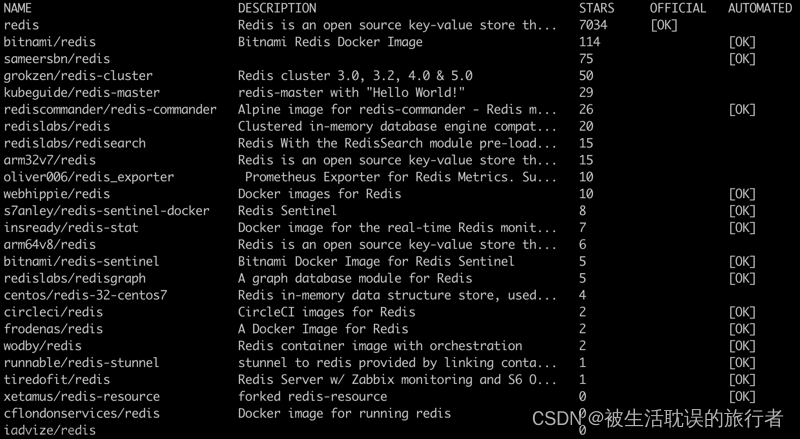// nodejs服务提供的http协议示例
const http = require('http');
const server = http.createServer((req, res) => {
res.writeHead(200, { 'Content-Type': 'text/html;charset=utf8' });
res.end(Date.now() + ' == > http访问成功8080')
});
server.listen(8080, () => {
console.log('服务已开启');
})
// nodejs服务提供的https协议示例
const https = require('https');
const fs = require('fs');
const path = require('path');
const options = {
key: fs.readFileSync(path.join(__dirname, './key.pem')),
cert: fs.readFileSync(path.join(__dirname, './cert.pem')),
};
const server = https.createServer(options, (req, res) => {
res.writeHead(200, { 'Content-Type': 'text/html;charset=utf8' });
res.end('https访问8081成功 == > ' + Date.now())
});
server.listen(8081, () => {
console.log('服务已开启');
})
// 正向代理 :如axios,http.proxy 用户直到,类似于梯子
var http = require('http');
var httpProxy = require('http-proxy')
// 创建代理服务器
let proxy = httpProxy.createProxyServer()
let server = http.createServer((req, res) => {
proxy.web(req, res, {
target: 'http://localhost:8080',
// target: 'https://localhost:8081', // 并不能代理https
})
})
server.listen(3000)
// server启动成功
server.on('listening', () => {
console.log('http启动完成')
})
// 关闭HTTP服务器
server.on('close', () => {
console.log('服务器关闭')
})
// 反向代理 :解决用户请求的,用户不知道
let httpProxy = require('http-proxy')
let https = require('https');
const fs = require('fs');
const path = require('path');
const options = {
key: fs.readFileSync(path.join(__dirname, './key.pem')),
cert: fs.readFileSync(path.join(__dirname, './cert.pem')),
};
// 这是我们配置的域名,我们可以访问这些域名,拿到对应的结果
let hosts = {
'as.cc': 'http://localhost:8080',
// 'as.com': 'https://localhost:8081',// 也不支持https
}
// 创建代理服务器
let proxy = httpProxy.createProxyServer()
let server = https.createServer(options, (req, res) => {
// 拿到host 访问对应的服务器
let host = req.headers['host'].split(':')[0]
console.log(666.789, host, hosts[host])
proxy.web(req, res, {
target: hosts[host] || 'https://localhost:8081'
})
})
server.listen(3001)
// server启动成功
server.on('listening', () => {
console.log('https启动完成')
})
// 关闭HTTPS服务器
server.on('close', () => {
console.log('服务器关闭')
})
// # nodejs原生实现转发http请求,方案一
const http = require("http");
const server = http.createServer();
server.on("request", (req, res) => {
var { connection, host, ...originHeaders } = req.headers;
var options = {
"method": req.method,
"hostname": "localhost",
"port": "8080",
"path": req.url,
"headers": { originHeaders }
}
//接收客户端发送的数据
var p = new Promise((resolve, reject) => {
let postbody = [];
req.on("data", chunk => {
postbody.push(chunk);
})
req.on('end', () => {
let postbodyBuffer = Buffer.concat(postbody);
resolve(postbodyBuffer)
})
});
//将数据转发,并接收目标服务器返回的数据,然后转发给客户端
p.then((postbodyBuffer) => {
let responsebody = []
var request = http.request(options, (response) => {
response.on('data', (chunk) => {
responsebody.push(chunk)
})
response.on("end", () => {
responsebodyBuffer = Buffer.concat(responsebody)
res.setHeader('Content-Type', 'text/html;charset=utf-8');
res.end(responsebodyBuffer);
})
})
// 使用request的write方法传递请求体
request.write(postbodyBuffer)
// 使用end方法将请求发出去
request.end();
})
});
server.listen(3002, () => {
console.log("runnng3002");
})
// # nodejs原生实现转发http请求,方案二
const http = require('http');
const server = http.createServer((req, res) => {
res.writeHead(200, { 'Content-Type': 'text/html;charset=utf8' });
const options = {
hostname: 'localhost',
port: 8080,
path: req.url,
method: req.method
};
const proxyReq = http.request(options, (proxyRes) => {
proxyRes.on('data', (chunk) => {
res.write(chunk);
});
proxyRes.on('end', () => {
res.end();
});
});
proxyReq.on('error', (e) => {
console.error(`请求遇到问题: ${e.message}`);
});
req.on('data', (chunk) => {
proxyReq.write(chunk);
});
req.on('end', () => {
proxyReq.setHeader('Content-Type', 'text/html;charset=utf-8');
proxyReq.end();
});
});
server.listen(3003, () => {
console.log('服务器正在监听3003端口');
});
// # nodejs原生实现转发https请求,方案一
const fs = require('fs');
const path = require('path');
let http = require('http');
let https = require('https');
const proxyoptions = {
key: fs.readFileSync(path.join(__dirname, './key.pem')),
cert: fs.readFileSync(path.join(__dirname, './cert.pem')),
};
const server = https.createServer(proxyoptions);
server.on("request", (req, res) => {
var { connection, host, ...originHeaders } = req.headers;
var options = {
"method": req.method,
// 随表找了一个网站做测试,被代理网站修改这里
"hostname": "localhost",
"port": "8080",
"path": req.url,
"headers": { originHeaders }
}
//接收客户端发送的数据
var p = new Promise((resolve, reject) => {
let postbody = [];
req.on("data", chunk => {
postbody.push(chunk);
})
req.on('end', () => {
let postbodyBuffer = Buffer.concat(postbody);
resolve(postbodyBuffer)
})
});
//将数据转发,并接收目标服务器返回的数据,然后转发给客户端
p.then((postbodyBuffer) => {
let responsebody = []
var request = http.request(options, (response) => {
response.on('data', (chunk) => {
responsebody.push(chunk)
})
response.on("end", () => {
responsebodyBuffer = Buffer.concat(responsebody)
res.setHeader('Content-Type', 'text/html;charset=utf-8');
res.end(responsebodyBuffer);
})
})
// 使用request的write方法传递请求体
request.write(postbodyBuffer)
// 使用end方法将请求发出去
request.end();
})
});
server.listen(3004, () => {
console.log("runnng3004");
})
// # nodejs原生实现转发https请求,方案一
const fs = require('fs');
const path = require('path');
let http = require('http');
let https = require('https');
const proxyoptions = {
key: fs.readFileSync(path.join(__dirname, './key.pem')),
cert: fs.readFileSync(path.join(__dirname, './cert.pem')),
};
const server = https.createServer(proxyoptions, (req, res) => {
res.writeHead(200, { 'Content-Type': 'text/html;charset=utf8' });
const options = {
hostname: 'localhost',
port: 8080,
path: req.url,
method: req.method
};
const proxyReq = http.request(options, (proxyRes) => {
proxyRes.on('data', (chunk) => {
res.write(chunk);
});
proxyRes.on('end', () => {
res.end();
});
});
proxyReq.on('error', (e) => {
console.error(`请求遇到问题: ${e.message}`);
});
req.on('data', (chunk) => {
proxyReq.write(chunk);
});
req.on('end', () => {
proxyReq.setHeader('Content-Type', 'text/html;charset=utf-8');
proxyReq.end();
});
});
server.listen(3004, () => {
console.log('服务器正在监听3004端口');
});
文章来源地址https://www.toymoban.com/news/detail-654567.html
文章来源:https://www.toymoban.com/news/detail-654567.html
到了这里,关于nodejs实现http与https服务;同时处理proxy代理的解决方案的文章就介绍完了。如果您还想了解更多内容,请在右上角搜索TOY模板网以前的文章或继续浏览下面的相关文章,希望大家以后多多支持TOY模板网!









